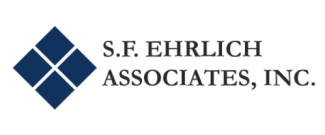
Stan's World - Making sense of senior living
The more people I speak to, the more people I find who don’t fully understand the concept of independent living. Considering how much independent living communities spend on advertising, I’m surprised how little is known about their benefits and programs.
In contrast, I suspect most of us know far more about 55+ communities. You may be aware, for example, that moving into a 55+ community typically requires at least one member of the household to be aged 55 or older. There may also be rules permitting children under 18 to stay in a home for a maximum of 30 days per year. This allows children to visit their grandparents but not to become full-time residents. It also eliminates families from moving in who already have children under 18.
Depending upon their size, 55+ communities may offer access to a golf course, a community center, and tennis and/or pickleball courts. Often, monthly homeowner’s association (HOA) fees cover exterior expenses and maintenance (e.g., lawn cutting, shrubbery, snow removal, exterior painting, and roof repairs). They are often advertised as a place to live if you want an active retirement.
Another option for active retirement is an independent living community. The term ‘independent living’ means no assistance is required in activities of daily living (e.g., bathing, eating, and dressing). Much like a 55+ community, independent living communities may offer a variety of social, cultural, and other activities. Contingent on size, residents live in either their own homes or apartments. They live the lifestyle they choose to live.
The main difference between 55+ and independent living is that independent living communities also offer additional services if/when a resident requires assistance in any activity of daily living. These types of communities may offer home care aides, as well as dedicated assisted living residences.
Some independent living communities offer a continuum of care, whereby residents may move from independent living to assisted living to nursing and/or memory care, all on the same campus. Known as continuing care retirement communities (CCRCs), these types of communities fill the needs of residents as they age. A common misperception about CCRCs, however, is that many people don’t realize how independent the lifestyle is within the independent living component.
Smaller independent living communities may have a few hundred residents, while others may have a few thousand. There may be monitored access to the campus, 24-hour EMTs, an onsite medical center, and a meal plan with a variety of restaurants. Larger communities may include a pool, gym, hair salons, clubs, a theater, and coffee shops. For residents, it’s effectively living on a campus with many of the same features as a small town.
If there’s a four-letter word to describe independent living, it’s “SAFE”. Residents have access to as much (or as little) assistance or care as they need or want. Listening to those who live in these communities, I have heard it described as a very pleasant way to age in place, with fewer worries about what the next chapter of life may entail. Should a health crisis arise, there’s no need to hurriedly find a place to go. You’re already there.
As I wrote about in past newsletters, my mother lived in an independent living community for the last ten years of her life, by her decision. Fortunately, when she lived in Florida, she had a group of forward-thinking friends who realized living alone was not the best way to age. In my mom’s case, I contend that living in a community where she felt safe and having access to a multitude of services extended her life. (She lived to 98.)
My mother lived in an Erickson community in North Jersey called Cedar Crest Village, with a resident population of about 2,000. One of the great features of Cedar Crest was all the buildings on the entire campus (and there were a lot of buildings) were connected by interior hallways. You could take the jitney that drove around campus all day or walk from your residence to a restaurant, the medical center, the theater, etc., without exposure to the elements. That aspect alone allowed residents to move freely about campus regardless of the weather.
Watching my mother thrive at Cedar Crest, I became a big fan of independent living. As our population ages, you’ll likely read more about different lifestyles available to seniors. Any relocation is a huge decision, and you should never feel that you’re making it alone. Call, and we’d be happy to serve as a sounding board as you approach this decision.

